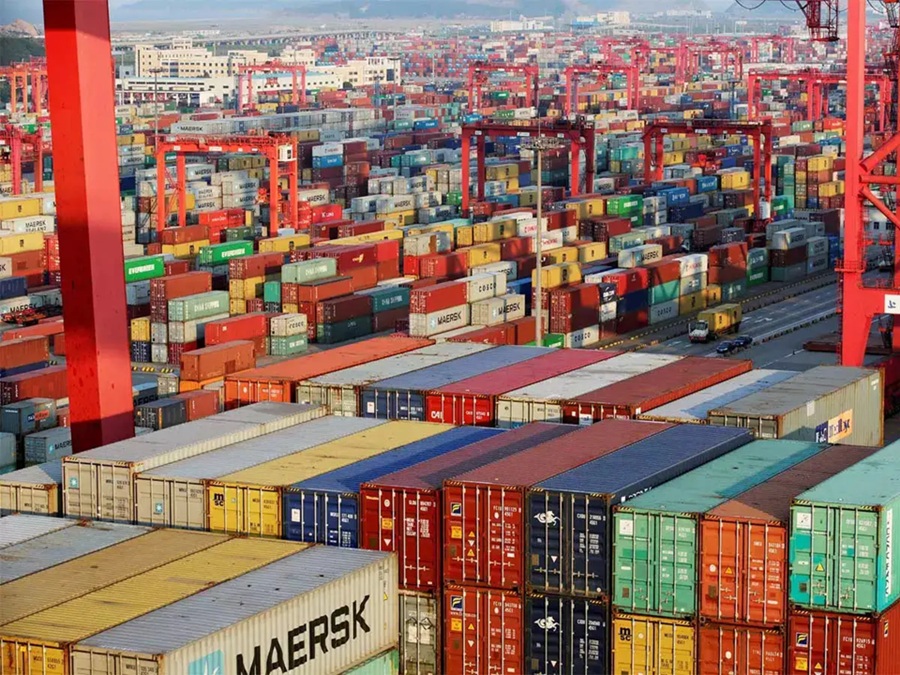On May 17, 2025, India’s Directorate General of Foreign Trade (DGFT) issued an immediate notification restricting the import of ready-made garments (RMG) and processed food products from Bangladesh through all land customs stations and integrated check posts in its northeastern states, except when routed through the seaports of Nhava Sheva and Kolkata. The move affects goods worth nearly USD 770 million—about 42 percent of Bangladesh’s exports to India—and is part of a broader pattern of reciprocal trade curbs between the two neighbors. While Indian industry bodies welcome the ban as a boost to domestic manufacturing, Bangladeshi exporters warn of higher logistics costs, stranded cargo, and damage to regional trade ties.
Background: A Wrench in Historically Robust Trade
South Asia’s Overland Trade Arteries
Bangladesh and India share a 4,000 km border with multiple land ports facilitating roughly USD 2.5 billion in bilateral trade annually, of which readymade garments constitute the largest single export item from Bangladesh to India. Since 2020, Dhaka had enjoyed a transshipment facility allowing its exports to Nepal, Bhutan, and other neighboring markets to transit through Indian land customs stations to seaports and airports in containers or closed-body trucks; this facility was revoked by India on April 8, 2025, citing “delays and higher costs” affecting its own exports.
Rising Political Strains
Trade relations have soured following political shifts in Dhaka, notably the departure of Prime Minister Sheikh Hasina in August 2024 amid mass protests and the interim government’s closer ties with China during a March 2025 Beijing visit. Bangladesh also imposed new barriers on Indian yarn and other goods earlier this year (e.g., a 1.8 BDT per tonne-per-kilometre transit fee), prompting New Delhi to view Dhaka’s measures as non-tariff barriers warranting reciprocal action.
Key Provisions of the DGFT Notification
Restricted Goods and Ports
Readymade garments: banned from all land customs stations (LCSs) and integrated check posts (ICPs) in Assam, Meghalaya, Tripura, Mizoram, and specified West Bengal checkpoints; permitted only via Nhava Sheva (Mumbai) and Kolkata seaports.
Processed foods: includes baked goods, snacks, chips, biscuits, confectionery, fruit-flavored and carbonated drinks; similarly barred from land transit.
Other items: plastic and PVC finished goods, wooden furniture, cotton and cotton-yarn waste, dyes—not allowed through LCSs/ICPs in the northeastern region.
Exemptions: essential commodities such as fish, LPG, edible oils, and crushed stone continue unhindered.
Effective Date
The restrictions took effect immediately upon the DGFT’s May 17 notification, with no phased implementation or advance notice to Bangladeshi authorities.
Scope
Applies to imports destined for the Indian domestic market; goods transiting India en route to Nepal and Bhutan remain unaffected.
Motivations Behind the Halt
Protecting Domestic Producers
Indian textile and food-processing associations had long lobbied against “unfair” competition from duty-free Bangladeshi imports, which grew by double digits in recent years due to zero import duty and geographic proximity. The ban is expected to recapture an estimated ₹1,000–2,000 crore of garment imports for domestic manufacturers, reducing so-called “back-door” entry of lower-cost Chinese fabrics via Bangladesh.
Strategic Reciprocity
The shift aligns with India’s broader response to Bangladesh’s own trade barriers—such as the transit fee and bans on Indian yarn—viewed by New Delhi as non-tariff measures that disadvantage Indian exporters and regional supply chains.
Security and Smuggling Concerns
Officials have also cited the need to curtail the smuggling of contraband and counterfeit goods across porous land borders, although no formal DGFT statement elaborated on this rationale.
Economic Impact
On Bangladeshi Exporters
Revenue loss: Exports through land routes comprised nearly USD 618 million of garment shipments alone between April 2024 and February 2025; redirecting these via sea may add 15–20 percent in logistics costs, eroding competitiveness.
Stranded Cargo: At least 36 trucks carrying food products were reported stranded at the Benapole-Petrapole checkpoint as of May 19, causing spoilage risks and contractual penalties for exporters.
Market Diversion: Bangladesh may pivot to alternate markets like Nepal, Bhutan, and Myanmar, but additional transport legs and ports capacity constraints could hamper volumes.
On Indian Buyers and Consumers
Higher Prices: Indian retailers reliant on low-cost Bangladeshi garments may face supply disruptions, potentially passing on 2–3 percent price increases to end consumers during peak seasons.
Domestic Industry Opportunity: The ban could spur ₹1,000 crore of incremental business for Indian textile firms, boosting local employment and capacity utilization.
Diplomatic and Regional Trade Considerations
Bilateral Tensions
The abrupt nature of the restrictions—implemented without prior diplomatic consultation—has raised concerns in Dhaka about the future of India-Bangladesh relations and trust in government-to-government channels.
Regional Supply Chains
Northeastern Indian states like Tripura, which rely heavily on Bangladeshi processed foods and plastics, could experience supply shortages, prompting some local traders to welcome the ban only reluctantly.
Calls for Dialogue
Bangladesh’s commerce adviser, SK Bashir Uddin, expressed optimism that issues would be resolved through “timely dialogue,” while BGMEA officials have formally requested a bilateral consultation to restore land-port access.
Path Forward and Recommendations
Phased Implementation: A gradual phase-out of land-port access, with clear lead times and stakeholder consultations, could mitigate abrupt disruptions.
Joint Technical Committee: Establish a bilateral working group to address port infrastructure bottlenecks, quality standards, and certificate verification processes.
Trade Facilitation Instruments: Explore digital pre-clearance systems and mutual recognition agreements for sanitary, phytosanitary, and packaging protocols to streamline inspections.
Complementary Incentives: India could offset Bangladesh’s increased shipping costs via subsidized container slots or East Coast port incentives to maintain competitiveness.
Address Non-Tariff Barriers: Both sides should commit to reducing unilateral transit fees and ensure compliance with World Trade Organization transit freedom provisions for contiguous neighbors.
Conclusion
India’s decision to halt the import of Bangladeshi garments and processed foods via land ports marks a significant escalation in South Asian trade policy dynamics. While aimed at protecting domestic industries and responding to Dhaka’s own trade measures, the abruptness of the ban risks harming small-scale exporters, stranding cargo, and eroding regional supply-chain resilience. A collaborative, phased, and dialogue-driven approach—backed by technical cooperation and mutual concessions—offers the best path to restoring balanced, growth-oriented trade between these historic partners.
